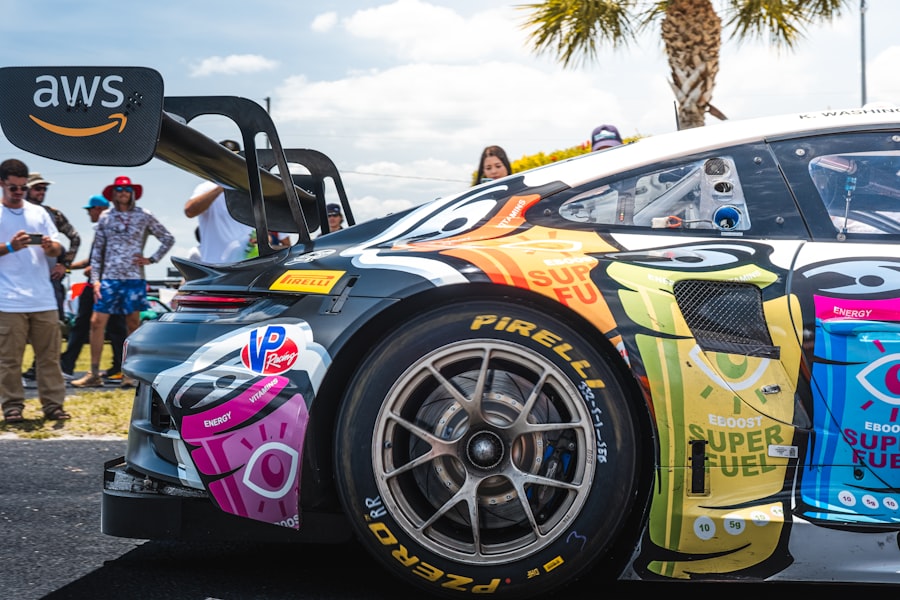Football sponsorship has evolved into a multi-billion dollar industry, transcending mere financial transactions to become a vital component of brand strategy for companies worldwide. The global reach of football, with its vast audience spanning continents, offers sponsors unparalleled visibility and engagement opportunities. Major tournaments like the FIFA World Cup and UEFA Champions League attract millions of viewers, creating a fertile ground for brands to cultivate loyalty and recognition.
The emotional connection fans have with their teams amplifies the impact of sponsorship, as brands become intertwined with the narratives and experiences that define the sport. Moreover, the power of football sponsorship lies in its ability to create authentic connections between brands and consumers. When a company aligns itself with a football club or event, it taps into the passion and loyalty that fans exhibit.
This emotional resonance can lead to increased brand affinity, as consumers are more likely to support brands that share their interests and values. For instance, when a brand sponsors a local club, it not only gains visibility but also positions itself as a community partner, fostering goodwill and trust among local fans. This dynamic illustrates how football sponsorship can transcend traditional advertising, creating a deeper bond between brands and their target audiences.
Key Takeaways
- Football sponsorship offers significant brand visibility and fan engagement opportunities.
- Choosing the right partnership aligns brand values with football entities for maximum impact.
- Utilizing social media and digital platforms amplifies sponsorship reach and interaction.
- Engaging content and community activation deepen fan connections and sponsorship effectiveness.
- Continuous measurement and adaptation ensure sustained ROI and relevance in evolving markets.
Identifying the Right Partnership Opportunities
Identifying the right partnership opportunities in football sponsorship requires a strategic approach that aligns brand values with the ethos of the sport and its stakeholders. Brands must conduct thorough research to understand the demographics of the fan base associated with potential sponsorships. For example, a luxury automobile manufacturer may find greater value in sponsoring a prestigious club like Real Madrid or Manchester United, where the audience aligns with high-income consumers.
Conversely, a local business might benefit more from partnering with a community club that resonates with regional pride and local engagement. Additionally, brands should consider the specific goals they aim to achieve through sponsorship. Whether it’s increasing brand awareness, driving sales, or enhancing corporate social responsibility initiatives, each objective may dictate different partnership choices.
For instance, a tech company looking to promote innovation might seek partnerships with clubs that emphasize youth development and technology integration in training. By aligning their objectives with the right clubs or events, brands can maximize their impact and ensure that their sponsorship efforts yield meaningful results.
Leveraging Social Media and Digital Platforms

In today’s digital age, leveraging social media and digital platforms is essential for maximizing the impact of football sponsorships. Social media channels such as Instagram, Twitter, and TikTok provide sponsors with direct access to fans, allowing for real-time engagement and interaction. Brands can create tailored content that resonates with specific fan segments, utilizing player endorsements, behind-the-scenes footage, and interactive campaigns to enhance their visibility.
For example, during major tournaments, sponsors often launch hashtag campaigns that encourage fans to share their experiences, effectively turning them into brand ambassadors. Moreover, digital platforms enable sponsors to track engagement metrics and audience sentiment in real time. This data-driven approach allows brands to refine their strategies on-the-fly, ensuring that their messaging remains relevant and impactful.
For instance, if a particular campaign garners significant attention on social media, brands can amplify their efforts by investing more resources into that direction. Additionally, collaborations with influencers or popular players can further extend reach and credibility, as fans are more likely to engage with content endorsed by figures they admire.
Creating Engaging Content and Experiences
| Metric | Description | Typical Range | Importance |
|---|---|---|---|
| Average Time on Page | Measures how long users stay engaged with content | 2-5 minutes | High |
| Click-Through Rate (CTR) | Percentage of users who click on a call-to-action or link | 2% – 10% | High |
| Social Shares | Number of times content is shared on social media platforms | 50 – 500 shares per post | Medium |
| Engagement Rate | Ratio of interactions (likes, comments) to total views or impressions | 1% – 5% | High |
| Bounce Rate | Percentage of visitors who leave after viewing only one page | 30% – 60% | Medium |
| Conversion Rate | Percentage of users completing a desired action (sign-up, purchase) | 1% – 5% | High |
| User Feedback Score | Average rating or qualitative feedback from users on content quality | 3.5 – 5 (out of 5) | Medium |
Creating engaging content and experiences is paramount for sponsors looking to make a lasting impression in the football landscape. The key lies in storytelling—crafting narratives that resonate with fans while seamlessly integrating the brand message. For instance, a beverage company sponsoring a football club might produce a series of short films showcasing the journey of young players from the academy to the first team, highlighting both the club’s values and the brand’s commitment to supporting youth development.
Such content not only entertains but also fosters an emotional connection between fans and the brand. Experiential marketing also plays a crucial role in enhancing fan engagement. Brands can create immersive experiences during match days or fan festivals that allow supporters to interact with players, participate in contests, or enjoy exclusive merchandise.
For example, a sports apparel brand might set up a pop-up shop at a stadium where fans can try on new gear and meet their favorite players. These experiences not only generate excitement but also create memorable moments that fans associate with both the sport and the sponsoring brand.
Measuring and Analyzing Sponsorship ROI
Measuring and analyzing sponsorship ROI is essential for brands to understand the effectiveness of their investments in football sponsorships. Traditional metrics such as brand awareness and sales figures are important; however, modern analytics tools allow for a more nuanced understanding of sponsorship impact. Brands can utilize advanced tracking methods to assess how sponsorship activities influence consumer behavior over time.
For instance, by analyzing website traffic spikes during major matches or social media engagement rates before and after campaigns, companies can gain insights into how their sponsorships drive interest and conversion. Furthermore, qualitative measures such as consumer sentiment analysis can provide valuable context to quantitative data. By monitoring social media conversations and conducting surveys among fans, brands can gauge how their sponsorship is perceived within the community.
This feedback loop enables companies to adjust their strategies accordingly—whether it’s refining messaging or enhancing community involvement—to ensure they are meeting fan expectations and maximizing their return on investment.
Activating Sponsorship Through Community Engagement

Activating sponsorship through community engagement is increasingly recognized as a vital strategy for brands looking to build meaningful connections with fans. Football clubs often serve as community hubs, fostering local pride and identity. By aligning sponsorship efforts with community initiatives—such as youth programs, health campaigns, or environmental sustainability projects—brands can demonstrate their commitment to social responsibility while enhancing their visibility among local audiences.
For example, a financial institution sponsoring a youth football league might not only provide funding but also offer financial literacy workshops for young athletes and their families. This approach not only strengthens the brand’s reputation but also creates positive associations among community members who appreciate the investment in local development. By actively participating in community events and initiatives, sponsors can cultivate goodwill and loyalty among fans who value brands that contribute positively to their lives.
Building Long-Term Relationships with Fans and Consumers
Building long-term relationships with fans and consumers is essential for brands seeking sustained success through football sponsorships. This involves moving beyond transactional interactions to foster genuine connections based on shared values and experiences. Brands should prioritize consistent engagement through various channels—whether it’s through social media interactions, exclusive fan events, or loyalty programs—that keep fans invested in both the sport and the brand.
For instance, a sportswear company might implement a loyalty program that rewards fans for attending matches or purchasing merchandise with exclusive discounts or early access to new products. By creating incentives for ongoing engagement, brands can cultivate a dedicated fan base that feels valued and appreciated. Additionally, maintaining open lines of communication through feedback mechanisms allows brands to adapt their strategies based on fan preferences, further solidifying these long-term relationships.
Adapting to the Changing Landscape of Football Sponsorship
The landscape of football sponsorship is continually evolving due to shifts in consumer behavior, technological advancements, and societal changes. Brands must remain agile and responsive to these changes to stay relevant in an increasingly competitive environment. For instance, the rise of streaming services has transformed how fans consume football content; sponsors must adapt by exploring partnerships with digital platforms that cater to this new viewing experience.
Moreover, societal movements such as sustainability and inclusivity are reshaping consumer expectations regarding corporate responsibility. Brands that proactively address these issues within their sponsorship strategies—such as promoting eco-friendly practices or supporting diversity initiatives—can resonate more deeply with modern consumers who prioritize ethical considerations in their purchasing decisions. By staying attuned to these trends and adapting their approaches accordingly, sponsors can ensure they remain at the forefront of football sponsorship while building lasting connections with fans in an ever-changing landscape.



